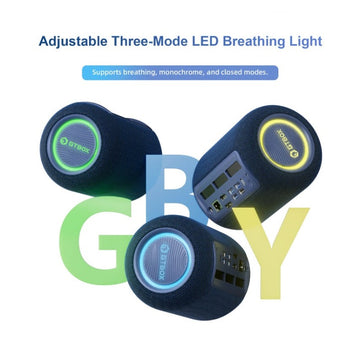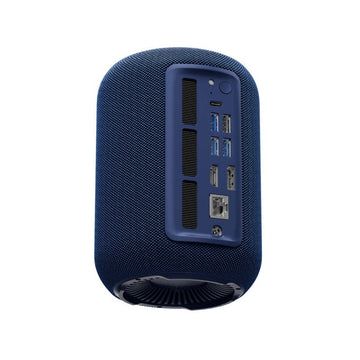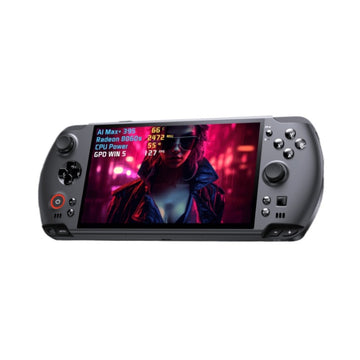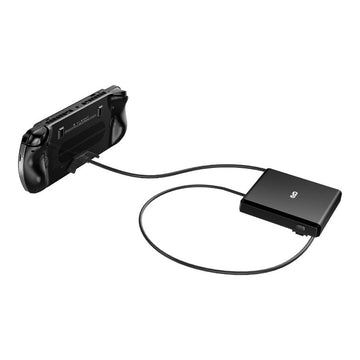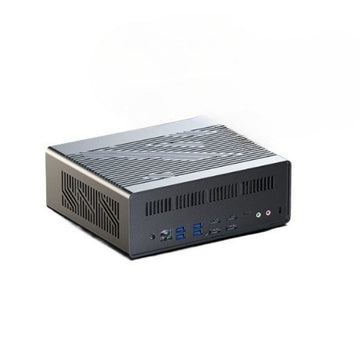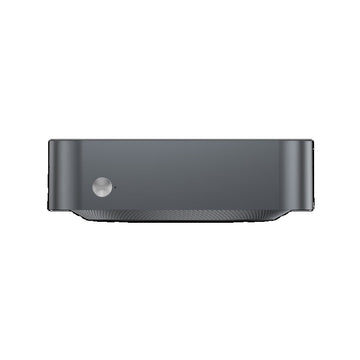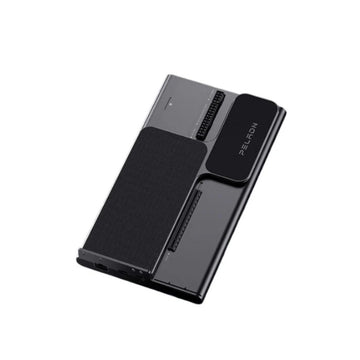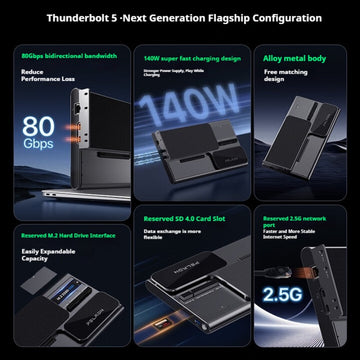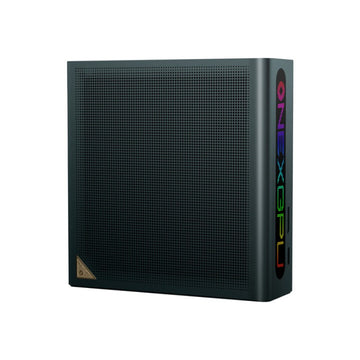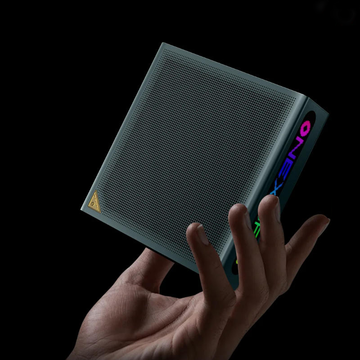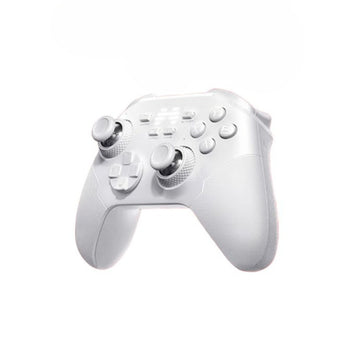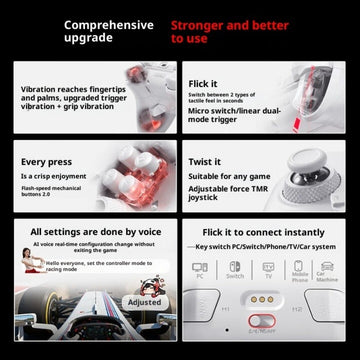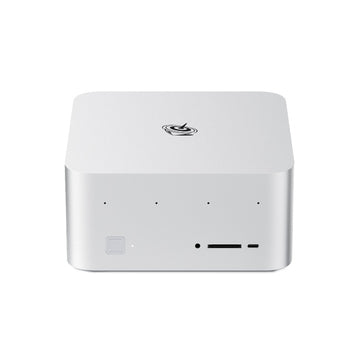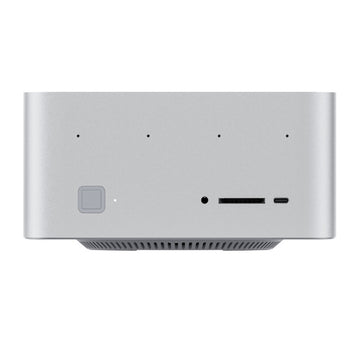Beelink GTR7 AMD 7840HS Mini PC Review
As a passionate Mini PC enthusiast, my anticipation for the first half of this year revolves around the upcoming AMD 7040 series (codenamed Phoenix) machine. In the previous year, AMD made significant advancements by upgrading their 6000 series APUs and GPUs from the VEGA architecture to the RDNA architecture. This leap resulted in an impressive performance boost of nearly 100%, enabling Mini PC users to experience the freedom of 1080P 3A gaming. Naturally, the upgraded model, AMD 7040 series APU, has generated high expectations among enthusiasts. Before diving into the evaluation, let's take a moment to review the key features of the 7040 series products.
This year, AMD introduced new naming conventions for mobile products, and here's a brief summary:
The 7045 series, part of the mobile version of the desktop 7000 series, utilizes a powerful 5nm process CPU. However, it features a comparatively weaker GPU, incorporating a 2CU RNDA2 bright machine integrated display. This series primarily targets gaming notebooks and aims to compete with Intel's desktop-end mobile products.
In contrast, the 7040 series takes center stage in this evaluation as the upgraded version of the 6000 series for mobile devices. Its CPU has been enhanced from the Zen3+ architecture to Zen4, boasting a 4nm process and up to 12CU RDNA3. This series represents a comprehensive upgrade over the 6000 series. Considered an older model, the 7035 series is essentially an upscale and rebranded version of the 6000 series. Similarly, the 7030 series follows the same pattern by upscaling and renaming the 5025 series.
On the other hand, the 7020 series is a new model that utilizes the older core with Zen2 architecture but incorporates an upgraded 6nm process. This series primarily caters to the low-end and entry-level markets.

7000 series product line, including five series

AMD’s new mobile product naming rules, note that only 7045 and 7040 are the main new mobile products in 2023

Because there is no power consumption limit, Mini-PCs generally use the standard voltage (H/HS) series with better comprehensive performance. HX series generally need to be equipped with independent graphics cards due to weak GPUs. There are no related Mini-PC products released yet
At present, the main 7040 series of AMD mobile terminal still adopts 1 Die (core) Cut For All, that is, regardless of the high-end R9 7940HS, the main R7 7840HS, or the relatively mid-range R5 7640HS, the cores are the same, only the R5 7640HS cuts 2 CPU cores + 4CU GPU cores.

Both R9 7940HS and R7 7840HS use 8-core 16-thread Zen4 cores. The difference is that the R9 7940H has a base frequency of 4.0Ghz and a turbo frequency of 5.2GHz, while the R7 7940H has a base frequency of 3.8Ghz and a turbo frequency of 5.1GHz. The R5 7640HS has 6 cores and 12 threads, a base frequency of 4.3Ghz, a turbo frequency of 5.0GHz, CPU, and GPU. Due to the high yield rate of AMD's actual products, the 7540 and 7440 with fewer cores have no HS (standard pressure) product planning. Compared with the 6000 series using Zen3+ CPU, the 7040 series CPU has a more advanced process, more advanced architecture, and larger cache, and the CPU performance will be improved to a certain extent.

However, although the architecture of the GPU part has been upgraded from RDNA2 to RNDA3, and the memory supported by a higher core frequency has also been upgraded to DDR5-5600, but due to the small difference in architecture, the GPU part should only have a small normal inter generational improvement. Like the 6000 series, the double improvement brought by the crossing from VEGA to RNDA is not seen in the 7000 series. So from my personal point of view, the 7040 series is a more balanced "comprehensive upgrade" generation, with CPU, GPU, and peripherals (PCIE Gen4, USB4) overall improved (rather than only the GPU upgraded like the 6000 series).

RDNA3 is an upgrade point compared to RDNA2 architecture, but for the nuclear display version of RNDA3, Chiplet Design is not included

In addition to the core CPU and GPU upgrades, this time the 7040 series APU natively supports two 40GBps rate USB4 interfaces, and the total number of available PCIe 4.0 channels has also increased to 20. The previous generation 6800 peripherals (especially M.2 SSD interface) problem has been solved. In addition, the supported memory has also been upgraded to DDR5-5600 and LPDDR5x-7500, but it is said that the initial version of FW/BIOS only supports the highest LPDDR5x-6400, considering the comprehensive delay and space, the Mini PC should still choose the DDR5 slot.

In terms of peripheral interfaces, the DP port version has been upgraded to 2.1, which supports UHBR10 (10Gbps) rate, and the supported refresh rate and resolution have also been improved.

The new RNDA3 architecture also brings more comprehensive encoding and decoding support. In addition to the traditional H.264 and H.265, the 7040 series provides support for AV1 hardware encoding and decoding for the first time.
Unpacking of Beelink GTR7
The product line division of Beelink is my personal favorite category, and the product line division is clear and clear:
- GT Series has the highest positioning, more additional functions (such as fingerprint recognition, multiple video outputs) covering industry users, pursuing high performance
- SE Series targets mainstream users
- EQ Series positioning entry, simple window machine or player
- The suffix Pro is the upgraded/enhanced version of the corresponding series
- R at the end of the series corresponds to AMD, I corresponds to Intel
- The series number part corresponds to the generation number (GTR7 corresponds to the AMD 7040 series processor, SEi 12 corresponds to the Intel 12th generation processor)
- In terms of size, the GTR series is 0.87L, and the SER/SEi/EQ series are currently about 0.6L
As the first 7040 series Mini PC to be sold, Beelink GTR7 is equipped with AMD R7 7840HS processor, and there will be GTR7 Pro equipped with R9 7940HS in the future. As for whether the GTR7 Pro of R9 7940HS is worth waiting for, I personally think it depends on the price difference between it and GTR7. After all, the difference between AMD 7840HS and 7940HS is only in the base frequency and turbo frequency, and the peripheral specifications are exactly the same.

This time, GTR7 provides two versions of barebones and 32G DDR5+1TB PCIe4.0 SSD. In terms of color, it provides four colors of black jade green, tourmaline blue, space gray, and Hermes orange.

This time I got the 32G+1TB version. Since it is the first batch of machines, the GTR label on the front is still red. Customer service feedback that the color of the official version label will match the body. In terms of outer packaging, the GTR 7 has a brand new black packaging this time, and the Phoenix printed on the front corresponds to the code name of the AMD 7040 series.

When you open the box, you can see a welcome card, which is printed on the back, which is a major selling point of this GTR7 series product - it has increased AMD's default 54W TDP to 65W.

The one I started with is a green color, and the overall metal texture feels much better than the previous generation. There is a Beelink Chinese LOGO on the left side of the top, and GT7 in the center and right side.

On the lower right is the two-in-one fingerprint recognition + power button. You can see that the corners of the metal shell are also very clean. The reflective cut corners complained by many users in previous generations are replaced by rounded cut edges. The official should listen to user feedback. Quite a few improvements.

On the front are the power button, ClearCMOS button, USB 3.2 10Gbps (Type-A) interface, USB 3.2 Type-C (10Gbps) and 3.5mm headphone jack. The color of the power button that many users complained about before has finally been changed to the same color as the body. Looks a lot more comfortable. Since mine is the first version, the GTR label on the far right uses the orange version, and subsequent versions will be replaced with the same color of the fuselage.

The back interface is very rich, providing USB2.0 (480Mbps)*2, USB 3.2 10Gbps*2, USB4 40GBps*2, HDMI2.1*1, DP1.4*1, 2.5G LAN*2, 3.5mm headphone jack* 1. Counting the front interface, this time provides a total of:
- USB4(Type-C) 40Gbps*2
- USB 3.2 (Type-C) 10Gbps*1
- USB 3.2 (Type-A) 10Gbps*3
- USB 2.0 (480Mbps Type-A)*1
- 1*1
- 4*1
- 5G LAN*2
- 5mm headphone jack*2
The total number and types of interfaces are very rich, especially the front and rear 3.5mm headphone jacks are provided. If users need to use wired headphones, it is much more convenient to directly connect to the front interface.
Careful friends may have noticed that in the introduction of the front and back interfaces, the DC power interface for powering the host is missing. This time, in order to provide more interfaces, GTR7 vacated the original DC power supply position, moved the power supply interface to the bottom of the fuselage and changed it to a magnetic connection.

In the past, the position of the DC power interface of the machine was replaced by a USB4 40Gpbs+3.5mm headphone jack.

Bottom magnetic interface

Remove the interface protection cover that comes with the factory, and you can see the main body of the magnetic interface. In fact, I think the magnetic attraction is not designed for function, but considers that the power supply interface is moved to the bottom, and the magnetic attraction is added to improve the reliability and stability of the connection.
Actually use the side of the power connector, put it vertically into the magnetic suction interface to fix it, and the actual measurement is still very stable. Users who are interested in this part can take a look at my previous unboxing video, which contains a complete demonstration of magnetic connection.

Magnetic suction power interface at the bottom, connect the power cord

The air outlet on the side of the fuselage is still printed with the word GTR, and it looks pretty good with the black jade green color matching

The accessories part provides two HDMI cables, 1 long and 1 short (I have already fixed the long one on the monitor stand, so I won’t remove it), VESA hanger, screwdriver and (mini size) power supply.

The power supply is still provided by the old supplier Huntkey, with an output power of 19V6.32A, corresponding to a power of 120W. However, it should be noted that the input voltage range of the power supply is 200~240V. If you need to go abroad (110V in some countries), you may need to contact customer service to purchase a 110V power supply.
Disassembly of Beelink GTR7

Friends who are familiar with me should know, how can we not take the machine apart to see the workmanship and design? Unscrew the four screws at the bottom, and gently pull the handle on the bottom cover to remove the cover.

The thickness of the cover plate is good, the position of the magnetic charging interface is well dug, and the arc edge is handled well. The progress of the shell technology of the past few generations is worthy of recognition.

The air guide cover is fixed by three screws
Beelink GTR7 still adopts a dual-fan design. The system fan (5V0.2A, 1W) at the bottom is responsible for the heat dissipation of the memory, SSD and the components on the back of the motherboard. The middle and sides of the plastic air guide cover are dug holes for the fan and SSD heat sink. design.

Unscrew the three screws that fix the cover of the windshield, and you can see the main board of the GTR7, which is still the familiar black PCB. The decoration and PCB wiring are relatively regular, and some interfaces are connected to the shell with conductive tape to improve the anti-ESD (static) ability.

In terms of memory, there are 2 pieces of Crucial 16GB DDR5-5600, forming a 32GB dual-channel configuration. Thanks to the sufficient space in the body, 2 PCIe4.0 M.2 SSD slots are provided. The wireless network card part adopts Intel AX200, supports WiFi-6, Bluetooth 5.2, and the highest wireless rate is 2.4Gbps.

The SSD part comes with thermal silica gel, which is in contact with the metal heat sink on the cover of the windshield to dissipate heat for the SSD

The SSD part is Crucial P3 Plus 1TB, using PCIe Gen4x4 with a nominal reading speed of 5000MB/s and a writing speed of 3600MB/s

Intel AX200 wireless network card

The audio chip uses Realtek ALC897 (7.1CH HD, 192khz sample rate). The USB Type-C interface next to it uses ASMedia's ASM1543 10Gbps Passive Switch


ASM1543

There is SSD foam under the dual M.2 slots for support, but the factory default foam thickness is thicker. If you use a double-sided SSD, the foam can be removed. The official later shipments will be replaced with thinner foam to improve Compatibility with double-sided SSDs.

Remove the WiFi antenna and the screws fixing the motherboard, and you can see the new VC vapor chamber + large fan design of the GTR7 this time. It should be the first in the field of Mini PCs to use a VC vapor chamber?
After removing the fan, you can see the VC vapor chamber above the CPU, but the silicone grease needs to be replaced due to the removal of the VC vapor chamber. I don't have a suitable high thermal conductivity silicone grease at hand, so I just look at the peripheral components here.

Under the black sticker is the VC vapor chamber, which can be simply understood as plane (2-dimensional) heat conduction, which is more efficient than heat pipes to (1-dimensional) heat conduction


Below the heat sink, you can see the ASM3142 from ASMedia and the CYPD6227 USB PD controller from Cypress (Infineon)

ASM3142 USB HC

CYPD6227 USB PD
Performance Testing
Performance Test Comparison

The online configuration before testing, R7-7840HS +32GB (16x2) Crucial DDR5 5600+1TB Crucial P3 Plus PCIe Gen4 x 4 SSD. Use factory default BIOS, default TDP 65W.
Comprehensive and CPU Benchmarks

For the comprehensive part, the common PCMark and the popular entertainment master were selected, and the comparison object was the previous generation 7735HS (45W, 6800H vest). The first is PCMark, which is generally difficult to widen the gap. It can be seen that the generation of GTR7 (R7-7840HS 65W) has indeed greatly improved. In PCMark, it is more than 1,000 points ahead of the previous generation of 7735HS (45W), and the 16.7% lead is an inter-generational upgrade. Medium is pretty big.

In the new version of Entertainment Master that everyone is familiar with, the total score has increased from just over one million in the previous generation to 1.32 million points (25.2% increase), and the CPU, GPU, MEM, and HardDisk have increased by 30.8%, 5.8%, and 13.2% respectively. , 31.9%, generally speaking, the four aspects of CPU, GPU, MEM, and SSD have all made overall progress.

The new version of Geekbench6 is also a popular cross-platform test software recently. It can be seen that the CPU part of the 7735HS scored 1884 single-core 1884 multi-core 8782, while the 7840HS single-core score 2555 multi-core 10201, which increased by 35.6% and 16.2% respectively.

For the GPU part, Geekbench6 is divided into two parts, OpenCL and Vulkan. Compared with 7735HS (6800H), 7840HS has improved by 20.8% and 23.7% respectively.

In terms of pure CPU performance, thanks to the Zen4 architecture, the improvement of the cache, and the 65W TDP of the zero-time GTR7, the single-core of the 7840HS in the CB R23 has increased by 17%, and the multi-core has increased by an exaggerated 40.6%. The improved TDP of Beelink should make a certain contribution to the multi-core running score.

In the CPU-Z running score part, you can also see that the R7-7840HS has made great progress, with single-core and multi-core increases of 11.2% and 27.5% respectively.

If compared with the desktop CPU, the single-core part is slightly ahead of the i9-11900K, and the multi-core part even surpasses the i9-11900K with the same 8 cores and 16 threads. With Zen4’s improved performance and large cache, the power of the Mini PC is only half that of the desktop, but its performance is close to or even surpasses that of the 11th generation desktop.

In terms of wprime, 32M and 1024M calculations are also faster than 7735HS. For users with higher CPU performance requirements, I personally think that if the price difference is not too big, choosing 7840HS will be much better than 7735HS (6800).

For the memory part, Beelink GTR7 uses two 16GB Crucial DDR5-5600, and the AIDA64 read timing is 46-45-45-90 CR1.

Compared with the 7735HS using DDR5-4800, the memory read, write, and copy speeds have increased by 19.2%, 57.1%, and 35.4% respectively. In addition to the contribution of DDR5-5600 memory frequency increase, AMD's memory controller seems to have improved compared to the previous generation.

Part of the SSD GTR7 adopts the P3 Plus 1TB version of Crucial, supports PCIe Gen4x4 interface, and has a nominal read speed of 5000MB/s and a write speed of 3600MB/s.

CrystalDiskMark's measured reading speed is 5182MB/s and writing speed is 3561MB/s.

In terms of productivity tools, Indigo Bench was tested, probably because the R7 7840HS is too new, and some software adaptations have not kept up. In the Indigo rendering part, the performance of R7 7840HS in Bedroom does not exceed the performance of 7735HS with weaker CPU performance, but in Bedroom (GPU) and SuperCar scenes, R7 7840HS is still ahead of 7735HS. This part may have to wait for a period of software adaptation before Started testing.

GPU and Gaming Benchmarks
The integrated graphics card of R7-7840HS is Radeon 780M, and the number of CUs of Radeon 680M integrated with the previous generation 7735HS is 12, but the core is upgraded from RDNA2 to RDNA3, and the frequency part has also been improved.

As a normal intergenerational upgrade, the R7 7840HS 3DMark TS used by Beelink GTR7 has a total score of 3187, a graphics score of 2832, and a CPU score of 11018. Compared with 7735HS, the total score increased by 21.1%, the graphics score increased by 20.8%, and the CPU increased by 26.7%.

The results of 3DMark FS are similar to those of 3DMark TS. FS total score is 7184, graphics score is 7728, physics score is 26540, and mixed score is 2741. Compared with 7735HS, the body color will give you 14.2%, 13.3%, 16.9%, and 16.3%. The graphics running score should be said to be a normal upgrade level, like the upgrade of the previous generation (6800/7735) from VEGA to the RNDA architecture (performance nearly doubled), which may be rare for many years.

However, the RNDA3 architecture also brings a new codec. The 7840HS already supports AV1 decoding and encoding in hardware. When the later software is adapted in place, the encoding performance of the 7840HS should be greatly improved.


Going back to the 3A game part, the performance of R7 7840HS is naturally more than 7735HS (6800), but the leading range is not large. There will be about 10%~close to 30% improvement in different games. Basically, for games that can be played smoothly by 7735 (6800), the frame rate of R7 7840HS will be higher, but if 7735 (6800) cannot play games at all, The R7 7840HS is still not up to the task.
According to the overall test results, the level of R7 7840HS integrated graphics still meets entry-level 3A for 1080P low-quality games. Although it is not much upgraded compared to the previous generation, for entry-level users, it is still quite meaningful (cost-saving) to play 1080P 3A with integrated graphics.
Temperature and Noise Test
Due to the high transistor density (process advantage) of the AMD mobile GPU, the general temperature of the AMD CPU will be higher than that of the Intel platform with the same TDP under the same heat dissipation conditions. In order to solve the temperature problem that many users care about, Beelink GTR7 uses VC vapor chamber. At a room temperature of 30 degrees, the CPU+FPU double baked for 30 minutes, and the maximum temperature of the CPU core was only 85 degrees. The TDP part has been stable at around 64~65W, and the CPU core frequency has been stable at 4.56Ghz.

30 seconds after the oven stopped, the core temperature quickly dropped from 85 degrees to 46 degrees, and the new VC vapor chamber has really good heat dissipation. Even for temperature-sensitive users, the temperature and heat dissipation capacity of this toaster should be satisfactory.

Good heat dissipation also allows the performance under high load to be fully released. In 20 consecutive rounds of CineBench R23 multi-core benchmarks, the Beelink GTR7 has basically remained at full blood. The multi-core running score has been maintained at around 17139 (average running score), and even reached a higher score in the second half, and the whole process was released without frequency reduction and full blood.

Although heat dissipation is an important part of the Mini-PC, silent control is also very important. After all, many users who choose a Mini-PC instead of a notebook care about the fact that the Mini-PC can provide a quieter experience.

Environmental noise 39.7 decibels
According to the actual measurement, under the normal use state of the desktop, the machine noise of Beelink GTR7 is basically equivalent to the environmental noise, and the decibels exceeding the environmental noise cannot be measured at all in the evening room.

Daily state human noise 39.6 decibels

Daily state close to the machine noise 38.9 decibels
Under the condition of 30min CPU+FPU double baking, the noise of Beelink GTR7 30cm person is 46.1 decibels, and the noise near the machine is 55.7 decibels. This noise performance is very good for a machine of the same size, but currently only 65W is provided in the BIOS. It is recommended that the official later can provide different TDP options, so that users like me who have higher requirements for quietness can appropriately reduce it. TDP (sacrificing a little performance) in exchange for a quieter experience.

CPU+FPC double baked for 30 minutes, the noise of the seat is 46.1 decibels

CPU+FPC double baked for 30 minutes, the machine position noise is 55.7 decibels
Conclusion
As the title says, I think Beelink GTR7 belongs to the "comprehensively improved" generation of products. The CPU, GPU, and peripherals of AMD R7 7840HS have certain upgrades compared to the previous generation. The rich interface and expandability, higher TDP (full blood performance), good quiet performance, and more design appearance provided by Superimposition Beelink this time are indeed a comprehensive upgrade compared to GTR6.
However, due to the fast release schedule of AMD this time, it seems that the driver and software adaptation have not kept up, and the CPU running score in the Indigo software has some abnormalities. After the AMD driver becomes stable, the performance advantage of the R7 7840HS should be greater in practical applications.
In terms of purchasing, the price of 7735HS machines (such as SER6 Pro) at this stage is indeed very good. The price of Beelink GTR7 (R7 7840HS) will be higher than that of machines like SER6 Pro. Whether the difference in price and overall performance is acceptable depends on you. user's judgment.

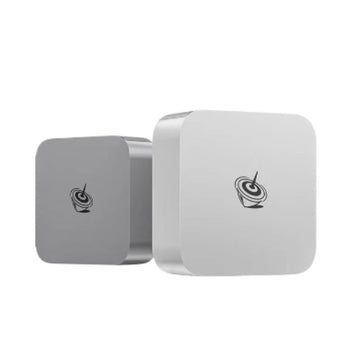
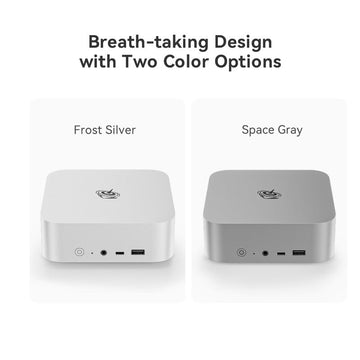
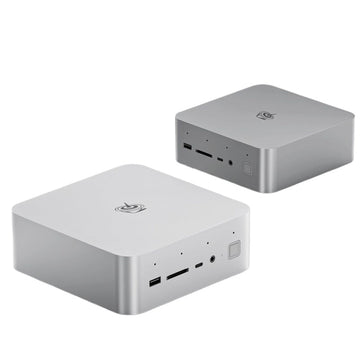
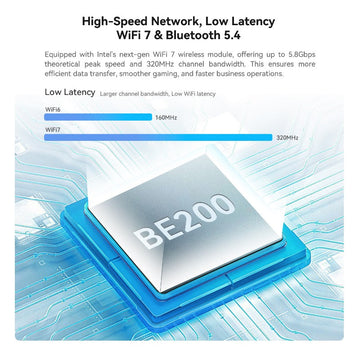
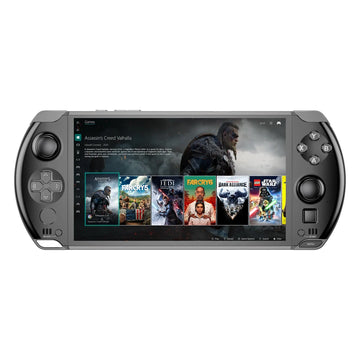

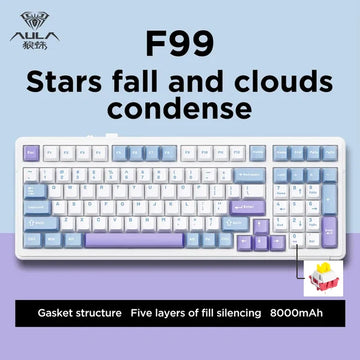
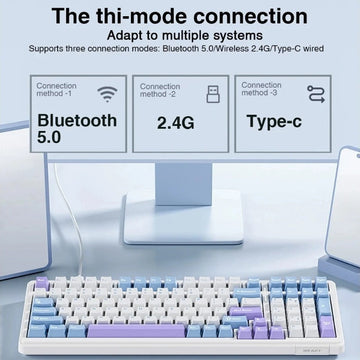





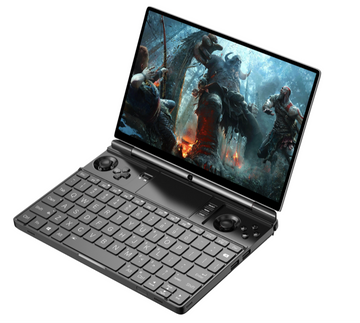

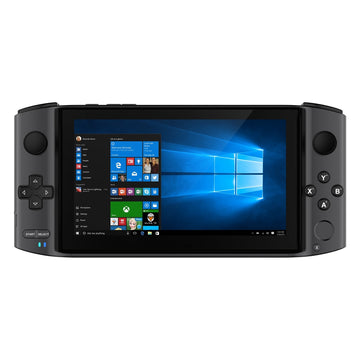
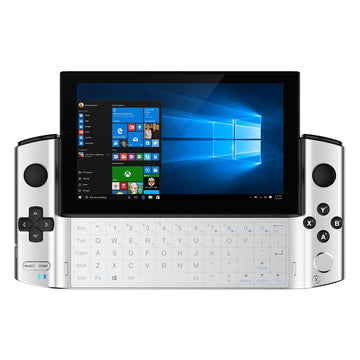
![[US Warehouse]Flydigi Vader 5 Pro Dragon Ball Limited Edition Game Controller](http://minixpc.com/cdn/shop/files/2bf62a4b1011cdf0b5088de9d5ad663d_360x.jpg?v=1763001514)
![[US Warehouse]Flydigi Vader 5 Pro Dragon Ball Limited Edition Game Controller](http://minixpc.com/cdn/shop/files/0944bf12c40c5bcaf5bc45c2a2f0b9e0_360x.jpg?v=1763001514)


